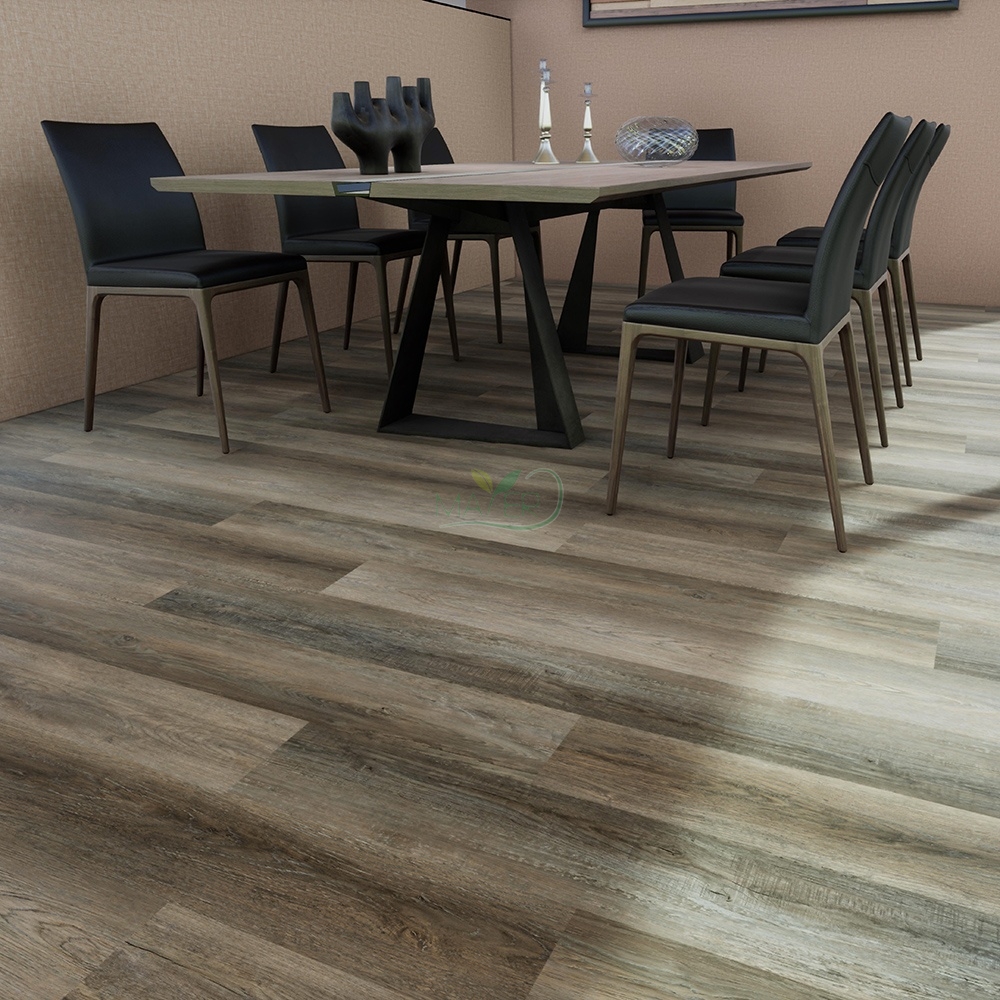In an era where sustainability and eco-friendliness are becoming increasingly important considerations, consumers are seeking out environmentally conscious options in all aspects of their lives, including home improvement projects. When it comes to flooring choices, Stone Plastic Composite (SPC) flooring has emerged as a popular option due to its numerous environmental benefits. In this article, we'll delve into the environmental advantages of choosing SPC flooring, examining its composition, production process, recyclability, and impact on indoor air quality.
Sustainable Composition:
SPC flooring is composed of a combination of natural and synthetic materials that are engineered to create a durable and versatile flooring option. The core of SPC flooring is typically made from limestone powder, a plentiful and renewable resource, combined with polyvinyl chloride (PVC) and stabilizers. Additionally, SPC flooring may contain recycled content, further reducing its environmental footprint. By using sustainable materials in its composition, SPC flooring helps to conserve natural resources and reduce reliance on finite resources.

Low Environmental Impact Production Process:
The production process of SPC flooring is designed to minimize environmental impact and energy consumption. Unlike traditional flooring materials such as hardwood or stone, which require extensive mining or logging operations, SPC flooring is manufactured using advanced technology and efficient manufacturing processes. The use of recycled materials, energy-efficient machinery, and closed-loop production systems helps to reduce waste and emissions, making SPC flooring a more sustainable choice compared to other flooring options.
Recyclability:
One of the key environmental benefits of SPC flooring is its recyclability. At the end of its life cycle, SPC flooring can be recycled and repurposed into new products, reducing the amount of waste sent to landfills. The PVC content in SPC flooring can be reclaimed and recycled into new flooring materials or other PVC products, contributing to a circular economy and reducing the need for virgin materials. Additionally, SPC flooring manufacturers may offer take-back programs or recycling initiatives to facilitate the recycling process and minimize environmental impact.
Indoor Air Quality:
SPC flooring is known for its low volatile organic compound (VOC) emissions, which contributes to better indoor air quality and a healthier living environment. VOCs are chemicals that can off-gas from building materials and contribute to indoor air pollution, leading to respiratory problems and other health issues. Unlike some flooring materials that may emit high levels of VOCs, such as certain types of laminate or vinyl flooring, SPC flooring is manufactured using low-VOC adhesives and finishes, reducing the risk of indoor air pollution and improving occupant health and comfort.
Longevity and Durability:
Another environmental benefit of choosing SPC flooring is its longevity and durability. SPC flooring is highly resistant to scratches, stains, and wear and tear, making it suitable for high-traffic areas in both residential and commercial settings. By choosing a durable flooring option like SPC, consumers can reduce the need for frequent replacements and renovations, which in turn reduces resource consumption and waste generation. Additionally, the long lifespan of SPC flooring helps to offset its environmental impact over time, making it a sustainable choice for eco-conscious consumers.
In conclusion, choosing SPC flooring offers numerous environmental benefits that contribute to a more sustainable and eco-friendly living environment. From its sustainable composition and low environmental impact production process to its recyclability and low VOC emissions, SPC flooring provides a greener alternative to traditional flooring options. By selecting SPC flooring for your home or commercial space, you can enjoy the beauty, durability, and performance of a high-quality flooring material while minimizing your environmental footprint and supporting a more sustainable future.



